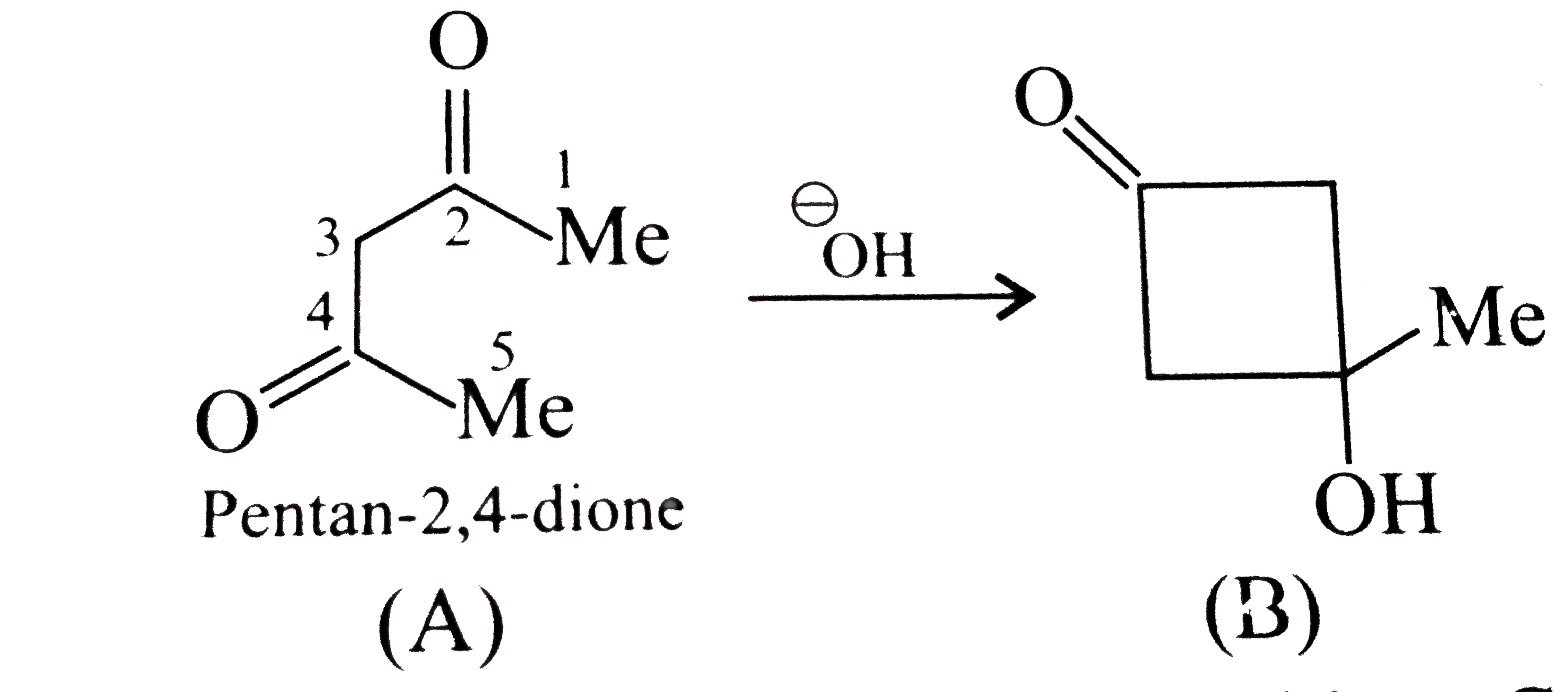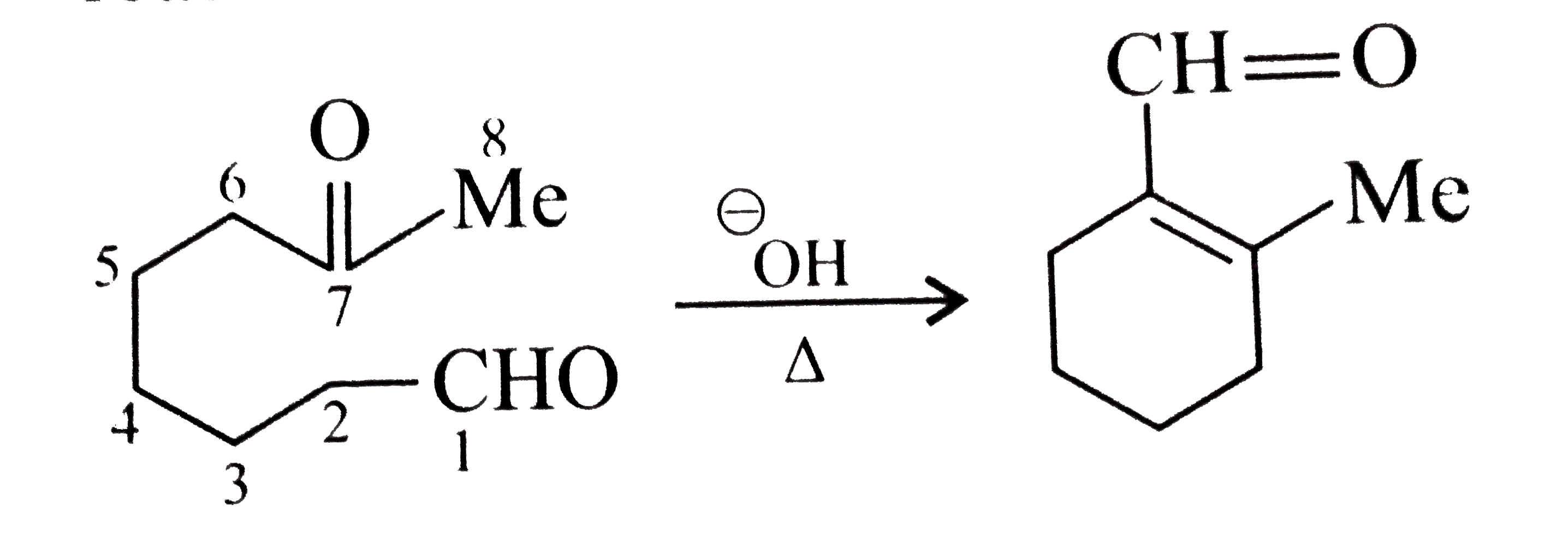Complete Solutions to Exercises Assertion-Reasoning of chapter ALIPHATIC AND AROMATIC ALDEHYDES AND KETONES of Class 12 book with complete answers and questions
| Class 12 | CHEMISTRY |
| Chapter | ALIPHATIC AND AROMATIC ALDEHYDES AND KETONES |
| CENGAGE CHEMISTRY | Exercises Assertion-Reasoning |
| Number Of Questions | 6 |
| Academic Year | 2023-24 |
Assertion (A): The following intramolecular aldol reaction occurs.

Reason (R ): The carbanion does not add to C-4 because a strained four-membered ring would result.
View SolutionAssertion (A): The equilibrium constant for cyanohydrin formation is `=10^(13)` times greater for cyclo-hexanone than for cyclophentanone.
Reason (R ): For a five-membered ring, reactions are more favourable when a ring C changes from `sp^(3)` to `sp^(2)` because eclipsing interactions are removed.
View SolutionAssertion (A): Pentan-2-one on reaction with `NaHSO_(3)` gives sodium bisulphite adduct product.
Reason (R ): `(C=O)` group of pentan-3-one is sterically hindered and nucleophile `SO_(3)^(2-)` is also of large size, so nucleophilic addition reaction does not occur.
View SolutionAssertion (A): The following reaction occurs.

Reason (R ): The semicarbazone of (A) (pentan-2-one) exists in two geometrical isomers.
View SolutionAssertion (A): The following intramolecular aldol reaction occurs.

Reason (R ): `(CHO)` is a better acceptor than `(C==O)`.
View SolutionAssertion (A): The reaction MeCOCI with `MeCuLi` or `Me_(2)Cd` gives acetone but with `MeMgBr` a `3^(@)` alcohol `(Me_(2)C-OH)`
Reason (R) `MeMgBr` is much more reactive. `Me_(2)CuLi` or `Me_(2)Cd` does not react by nucleophilic addition reaction.
View Solution
Exercises Assertion-Reasoning questions and complete solutions for chapter ALIPHATIC AND AROMATIC ALDEHYDES AND KETONES of CENGAGE CHEMISTRY (ENGLISH) of Class 12
All Exercises from CENGAGE CHEMISTRY Class 12 CHEMISTRY ALIPHATIC AND AROMATIC ALDEHYDES AND KETONES
- Archives Fill In Theblanks
- Archives Linked Comprehension
- Archives Multiple Correct
- Archives Objective
- Archives Subjective
- Archives True And False
- Exercises Assertion-Reasoning
- Exercises Concept Application
- Exercises Linked Comprehension
- Exercises Multiple Correct
- Exercises Single Correct
- Exercises Subjective
- Illustration
- Solved Examples